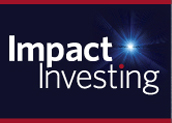‘Innate Value’
Slow Money says its roughly 1,000 members have invested more than $35 million in about 350 small food enterprises during the past five years––mostly in the U.S., with a little bit in France and Switzerland. Not bad, Tasch says, for a tiny nonprofit NGO with five staff people and a $500,000 budget.
Slow Money has 10 investment clubs around the country, where the whole group collectively decides where to invest. Slow Money’s first––and now largest––investment club was No Small Potatoes in Maine, which has made roughly $8.6 million in food-related investments during the past three and a half years.
But the bulk of Slow Money’s investments have come via local networks such as Slow Money Kentucky, where people hold meetings about investing in local food and essentially make individual investments. “A lot of these are short loans at two to three years with low interest, so we’re just starting to see returns and losses and we’ll have data in a few years,” Tasch says. “It’s an activist agenda and not a fiduciary thing in that we’re saying take some of your money from the big pot and put it to work in food.”
The question is how can Slow Money reach a wider audience when return on investment is secondary to helping the commonweal?
“As one woman at a Slow Money workshop in Ashland, Oregon, told me, ‘The innate value of this kind of investing is so obvious to me that I don’t care how much money I make,’” Tasch says. “When you talk about metrics and returns, you have to consider the social and environmental returns in doing this.”
Of course, basing an investment on innate value doesn’t cut it for many or maybe even most investors.
“Some advisors are waiting for a product to come along to make this easy to invest in,” Tasch says. “The closest there is are Iroquois Valley Farms and Farmland LP, which are a couple of professionally managed funds [focused on organic farmland] that make it possible for someone to advise a client to put money into. But most of us are just doing direct investments that are very local. Maybe we’ll eventually have the metrics that will help small institutional investors do something like this, or some of the fiduciaries. But that’s not our main objective, which is about getting money flowing and getting people engaged.”
This spring, Slow Money launched a nonprofit investment club in Colorado in the Aspen-Carbondale area that Tasch says is loosely modeled along the lines of Social Venture Partners, a U.S.-based organization with 36 networks of venture philanthropists around the globe who collaboratively invest in nonprofits in their respective regions.
“It hit me that we should put our money as a donation, which would relax some of our transaction mentality and build on the idea that we’re trying to build something over 25 years,” Tasch explains. “Putting this into the philanthropic allocation in someone’s portfolio might be a way of doing this from a fiduciary point of view. Instead of thinking about this as return-agnostic investing, you can think about this as super-positive return philanthropy. Seems promising, but the big question is how many people want to put in money on that kind of philanthropic basis?”

